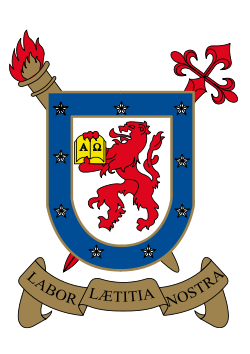 Universidad de Santiago de Chile seal | |
| Motto | Labor Lætitia Nostra (Latin) |
|---|---|
Motto in English | Work is Our Joy |
| Type | Public |
| Established | June 21, 1849 (EAO) April 9, 1947 (UTE) March 21, 1981 (USACH) |
| Founder | Ignacy Domeyko |
| Rector | Rodrigo Vidal Rojas |
Academic staff | 2762 |
| Students | 21,520 |
| Undergraduates | 20,546 |
| Postgraduates | 974 |
| Location | , , |
| Campus | Urban (340,000 m2) |
| Majors | 55 |
| Mascot | Lion |
| Website | www.usach.cl |
 | |
The University of Santiago, Chile (Usach) (Spanish : Universidad de Santiago de Chile) is one of the oldest public universities in Chile. The institution was born as Escuela de Artes y Oficios (Spanish: School of Arts and Careers) in 1849 by Ignacy Domeyko, under the government of Manuel Bulnes. It became Universidad Técnica del Estado (Spanish: Technical University of the State) in 1947, with various campuses throughout the country. In 1981, as a consequence of a reform on higher education under the dictatorship of Augusto Pinochet, it became what is now known as Universidad de Santiago de Chile, with all activities centered in a single 340,000 m2 campus in the capital Santiago.
Contents
- History
- Escuela de Artes y Oficios
- Universidad Técnica del Estado
- Universidad de Santiago de Chile
- Departments
- Independent Organizations
- Feusach
- Afusach
- University of Santiago Planetarium
- Communication Media
- University of Santiago, Chile Radio and Television (1959 to present)
- U. de Santiago al Día
- Rankings and accreditation
- Notable people
- Stadium
- References
- External links


